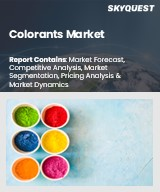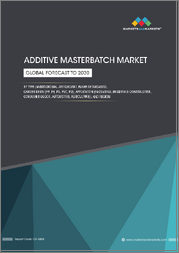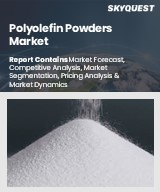
|
시장보고서
상품코드
1824258
세계의 플라스틱 안료 시장 : 예측(2025-2030년)Plastic Pigments Market - Forecasts from 2025 to 2030 |
||||||
플라스틱 안료 시장은 CAGR 6.21%로, 2025년 154억 4,600만 달러에서 2030년에는 208억 7,800만 달러로 성장할 것으로 예측됩니다.
플라스틱 안료는 우수한 내후성, 투명성, 화학적 안정성, 방진성 등의 기능 강화를 실현하기 위해 폴리머베이스에 내장된 특수 미립자 첨가제를 말합니다. 이러한 성능 향상 미립자는 유기 화합물과 무기 화합물로 분류되며, 각각 특정 용도에 따라 뚜렷한 이점을 제공합니다. 기능적 장점과 미적 특성이 결합된 플라스틱 안료는 플라스틱 응용 분야에서 성능과 시각적 매력을 모두 필요로 하는 여러 산업 분야에서 필수적인 구성 요소로 자리매김하고 있습니다.
플라스틱 안료가 페인트 및 코팅제에 광범위하게 사용되는 자동차 산업, 건축 및 건설 산업 등 주요 최종 사용자 분야의 생산성 확대가 시장의 강력한 성장을 주도하고 있습니다. 안료 제조의 기술 혁신은 다양한 응용 분야에서 점점 더 까다로워지는 성능 요건을 충족하는 가볍고 오래 지속되는 솔루션을 개발할 수 있게 해줍니다.
시장 세분화 분석
플라스틱 안료 시장은 화학 성분에 따라 뚜렷한 세분화를 보여 주며, 주로 유기 및 무기 카테고리로 나뉩니다. 유기 안료 부문은 제조업체의 선호도 변화와 규제 환경의 변화에 힘입어 예측 기간 동안 큰 시장 점유율을 유지할 것으로 예측됩니다.
무기 안료 제조 시 발생하는 오염에 대한 환경오염에 대한 우려가 높아지면서 유기 대체품에 대한 업계의 관심이 높아지고 있습니다. 이러한 전환은 보다 광범위한 지속가능성 트렌드와 환경 친화적인 제조 공정을 지지하는 규제 압력을 반영하고 있습니다. 유기 안료는 기존의 무기 배합과 관련된 환경 및 건강 문제를 해결하면서 동등한 성능 특성을 제공합니다.
화장품 부문은 유기 안료의 중요한 촉진제이며, 성분의 안전성에 대한 인식이 높아지면서 아이라이너, 스킨케어 포뮬러, 매니큐어, 다양한 메이크업 제품을 포함한 제품에서 유기농 대체품에 대한 수요가 증가하고 있습니다. 보다 안전하고 지속 가능한 화장품 성분에 대한 소비자의 선호는 퍼스널케어 분야에서 유기 안료의 채택을 계속 지지하고 있습니다.
시장 성장 촉진요인
자동차 산업은 플라스틱 안료 수요의 주요 촉진제가 되었습니다. 이 컴파운드는 대시보드, 범퍼 등 자동차 부품에 코팅으로 적용될 때 열 안정성, 내후성, 방진성 등 필수적인 기능을 제공합니다. 자동차 산업은 양호한 투자 환경과 저연비 차량에 대한 수요 증가, 팬데믹 이후 회복세에 힘입어 생산과 소비 규모를 자극하고 있습니다.
자동차 응용 분야에서는 극한의 온도 변화, 자외선 노출, 환경 스트레스에 견딜 수 있고 색상의 무결성과 표면 보호 기능을 유지할 수 있는 플라스틱 안료가 필요합니다. 이러한 성능 요구 사항은 장기적인 내구성과 미적 매력을 제공하는 첨단 안료 기술과 완벽하게 일치합니다.
화장품 산업의 성장
급속한 도시화, 생활수준의 향상, 가처분 소득 증가로 인해 화장품에 대한 수요가 크게 증가하여 플라스틱 안료 제조업체에 대응할 수 있는 성장 기회를 창출하고 있습니다. 화장품 산업의 성장은 인구 통계학적 변화와 라이프스타일의 변화에 따라 개인 관리와 외모를 가꾸고자 하는 소비자들의 다양한 트렌드를 반영하고 있습니다.
주요 화장품 기업들은 특히 풍요로움이 화장품 소비를 촉진하는 신흥 시장에서 매출 증가를 계속 보고하고 있습니다. 이러한 성장은 안전 및 성능 기준을 충족하면서 원하는 미적 특성을 제공하는 고품질 안료에 대한 수요 증가와 직결됩니다.
규제 이슈
플라스틱 안료 시장은 특히 제조 공정에서 휘발성 유기화합물(VOC) 배출에 대한 규제에 대한 큰 문제에 직면해 있습니다. 무기 안료의 생산은 신장, 간, 폐 손상 및 호흡기 감염을 포함한 심각한 건강 위험을 초래하는 VOC 배출이 발생합니다.
정부 당국은 이러한 건강 및 환경 영향을 완화하기 위해 엄격한 배출 기준을 설정하고 있습니다. 대기 정화법(Clean Air Act)과 같은 규제 프레임워크는 VOC 배출에 대한 EPA의 감시를 의무화하고 있으며, 이는 제조 운영과 비용에 영향을 미치는 준수 의무를 발생시킵니다. 이러한 규제는 제조 시 유해한 배출물이 적게 발생하는 유기 안료의 대체품을 지지하고 있습니다.
향후 시장 전망
플라스틱 안료 시장 전망은 주요 최종 사용자 산업의 기본 성장 추세에 힘입어 규제 문제에도 불구하고 여전히 밝습니다. 자동차 산업의 지속적인 확대, 건축 및 건설 산업의 발전, 화장품 시장의 성장은 지속적인 수요 기회를 제공합니다.
시장의 진화는 환경과 건강에 대한 우려를 해결하면서 동등한 성능 특성을 제공하는 유기 안료 배합에 유리하게 작용할 가능성이 높습니다. 청정 생산 기술과 유기 안료 개발에 투자하는 제조업체는 규제 동향과 지속 가능한 대안에 대한 소비자의 선호를 활용할 수 있는 위치에 있습니다.
이 시장에서의 성공은 특수 안료 솔루션을 필요로 하는 다양한 응용 분야에서 기대되는 비용을 충족시키면서 성능 요건과 환경 규정 준수 사이의 균형을 맞추는 데 달려 있습니다.
본 보고서의 주요 장점
- 통찰력 있는 분석 : 고객 부문, 정부 정책 및 사회경제적 요인, 소비자 선호도, 산업별, 기타 하위 부문에 초점을 맞춘 주요 지역 및 신흥 지역을 포괄하는 상세한 시장 분석을 얻을 수 있습니다.
- 경쟁 구도: 세계 주요 기업들이 채택하고 있는 전략적 전략을 이해하고, 적절한 전략을 통한 시장 침투 가능성을 파악할 수 있습니다.
- 시장 동향과 촉진요인 : 역동적인 요인과 매우 중요한 시장 동향, 그리고 이들이 향후 시장 발전을 어떻게 형성할 것인지에 대해 알아봅니다.
- 실행 가능한 제안: 통찰력을 전략적 의사결정에 활용하고, 역동적인 환경 속에서 새로운 비즈니스 스트림과 수익을 발굴합니다.
- 다양한 사용자에 대응: 스타트업, 연구기관, 컨설턴트, 중소기업, 대기업에 유익하고 비용 효율적임.
어떤 용도로 사용되는가?
산업 및 시장 인사이트, 사업 기회 평가, 제품 수요 예측, 시장 진출 전략, 지리적 확장, 설비 투자 결정, 규제 프레임워크 및 영향, 신제품 개발, 경쟁의 영향
조사 범위
- 2022-2024년 과거 데이터 & 2025-2030년 예측 데이터
- 성장 기회, 과제, 공급망 전망, 규제 프레임워크 및 동향 분석
- 경쟁사 포지셔닝, 전략 및 시장 점유율 분석
- 매출 성장 및 예측 국가를 포함한 부문 및 지역별 분석
- 기업 프로파일링(특히 재무 및 주요 개발)
목차
제1장 주요 요약
제2장 시장 현황
- 시장 개요
- 시장의 정의
- 조사 범위
- 시장 세분화
제3장 비즈니스 상황
- 시장 성장 촉진요인
- 시장 성장 억제요인
- 시장 기회
- Porter의 Five Forces 분석
- 업계 밸류체인 분석
- 정책 및 규제
- 전략적 제안
제4장 기술 전망
제5장 플라스틱 안료 시장 : 안료 유형별
- 서론
- 유기 안료
- 무기 안료
제6장 플라스틱 안료 시장 : 색상별
- 서론
- 적색
- 청색
- 녹색
- 황색
- 흑색
- 백색
- 기타
제7장 플라스틱 안료 시장 : 용도별
- 서론
- 포장
- 자동차용 플라스틱
- 소비재
- 건축 및 건설용 플라스틱
- 전기 및 전자
- 농업용 필름
- 의료용 플라스틱
- 기타
제8장 플라스틱 안료 시장 : 지역별
- 서론
- 북미
- 안료 유형별
- 색상별
- 용도별
- 국가별
- 미국
- 캐나다
- 멕시코
- 남미
- 안료 유형별
- 색상별
- 용도별
- 국가별
- 브라질
- 아르헨티나
- 기타
- 유럽
- 안료 유형별
- 색상별
- 용도별
- 국가별
- 영국
- 독일
- 프랑스
- 스페인
- 기타
- 중동 및 아프리카
- 안료 유형별
- 색상별
- 용도별
- 국가별
- 사우디아라비아
- 아랍에미리트(UAE)
- 기타
- 아시아태평양
- 안료 유형별
- 색상별
- 용도별
- 국가별
- 중국
- 일본
- 인도
- 한국
- 대만
- 기타
제9장 경쟁 환경과 분석
- 주요 기업과 전략 분석
- 시장 점유율 분석
- 합병, 인수, 합의 및 협업
- 경쟁 대시보드
제10장 기업 개요
- BASF SE
- Clariant AG
- DIC Corporation
- Heubach GmbH
- LANXESS AG
- Venator Materials PLC
- KRONOS Worldwide, Inc.
- Plasti Pigments Pvt. Ltd.
제11장 부록
- 통화
- 전제조건
- 기준연도와 예측연도 타임라인
- 이해관계자의 주요 이점
- 조사 방법
- 약어
도표
표 리스트
LSH 25.10.13The plastic pigments market is expected to grow from USD 15.446 billion in 2025 to USD 20.878 billion in 2030, at a CAGR of 6.21%.
Plastic pigments represent specialized particulate additives integrated into polymer bases to deliver enhanced functional benefits including superior weather resistance, transparency, chemical stability, and dust resistance. These performance-enhancing particles are categorized as either organic or inorganic compounds, each offering distinct advantages for specific applications. The combination of functional benefits and aesthetic properties positions plastic pigments as essential components across multiple industries requiring both performance and visual appeal in plastic applications.
The market demonstrates strong growth dynamics driven by expanding productivity in key end-user sectors, particularly automotive and building and construction industries, where plastic pigments find extensive application in paints and coatings formulations. Technological innovations in pigment manufacturing have enabled the development of lightweight, long-lasting solutions that meet increasingly demanding performance requirements across diverse applications.
Market Segmentation Analysis
The plastic pigments market exhibits clear segmentation based on chemical composition, primarily divided into organic and inorganic categories. The organic pigment segment is projected to maintain substantial market share throughout the forecast period, driven by shifting manufacturer preferences and evolving regulatory landscapes.
Growing environmental concerns regarding pollution generated during inorganic pigment manufacturing have catalyzed industry interest toward organic alternatives. This transition reflects broader sustainability trends and regulatory pressures that favor environmentally responsible manufacturing processes. Organic pigments offer comparable performance characteristics while addressing environmental and health concerns associated with traditional inorganic formulations.
The cosmetics sector represents a significant growth driver for organic pigments, where increasing awareness about ingredient safety has elevated demand for organic alternatives in products including eyeliners, skincare formulations, nail polish, and various makeup products. Consumer preference for safer, more sustainable cosmetic ingredients continues to support organic pigment adoption in personal care applications.
Primary Market Drivers
The automotive industry serves as the predominant growth driver for plastic pigments demand. These compounds provide essential thermal stability, weather resistance, and dust protection when applied as coatings on automotive components such as dashboards and bumpers. The automotive sector's post-pandemic recovery, supported by favorable investment conditions and growing demand for fuel-efficient vehicles, has stimulated production and consumption scales.
Automotive applications require plastic pigments capable of withstanding extreme temperature variations, UV exposure, and environmental stresses while maintaining color integrity and surface protection. These performance requirements align perfectly with advanced pigment technologies that deliver long-term durability and aesthetic appeal.
Cosmetics Industry Growth
Rapid urbanization, improved living standards, and increased disposable income have generated substantial demand growth in cosmetics products, creating corresponding opportunities for plastic pigments manufacturers. The cosmetics industry's expansion reflects broader consumer trends toward personal care and appearance enhancement, supported by demographic shifts and evolving lifestyle preferences.
Major cosmetics companies continue reporting revenue increases, particularly in emerging markets where rising affluence drives cosmetics consumption. This growth translates directly into increased demand for high-quality pigments that deliver desired aesthetic properties while meeting safety and performance standards.
Regulatory Challenges
The plastic pigments market faces significant regulatory challenges, particularly concerning volatile organic compound (VOC) emissions during manufacturing processes. Inorganic pigment production generates VOC emissions that pose serious health risks including kidney, liver, and lung damage, as well as respiratory tract infections.
Government authorities have implemented stringent emission standards to mitigate these health and environmental impacts. Regulatory frameworks such as the Clean Air Act require EPA oversight of VOC emissions, creating compliance obligations that impact manufacturing operations and costs. These regulations favor organic pigment alternatives that generate fewer harmful emissions during production.
Future Market Outlook
The plastic pigments market outlook remains positive despite regulatory challenges, supported by fundamental growth trends across key end-user industries. The automotive sector's continued expansion, building and construction industry development, and cosmetics market growth provide sustained demand opportunities.
Market evolution will likely favor organic pigment formulations that address environmental and health concerns while delivering comparable performance characteristics. Manufacturers investing in clean production technologies and organic pigment development are positioned to capitalize on regulatory trends and consumer preferences for sustainable alternatives.
Success in this market will depend on balancing performance requirements with environmental compliance while meeting cost expectations across diverse application segments requiring specialized pigment solutions.
Key Benefits of this Report:
- Insightful Analysis: Gain detailed market insights covering major as well as emerging geographical regions, focusing on customer segments, government policies and socio-economic factors, consumer preferences, industry verticals, and other sub-segments.
- Competitive Landscape: Understand the strategic maneuvers employed by key players globally to understand possible market penetration with the correct strategy.
- Market Drivers & Future Trends: Explore the dynamic factors and pivotal market trends and how they will shape future market developments.
- Actionable Recommendations: Utilize the insights to exercise strategic decisions to uncover new business streams and revenues in a dynamic environment.
- Caters to a Wide Audience: Beneficial and cost-effective for startups, research institutions, consultants, SMEs, and large enterprises.
What do businesses use our reports for?
Industry and Market Insights, Opportunity Assessment, Product Demand Forecasting, Market Entry Strategy, Geographical Expansion, Capital Investment Decisions, Regulatory Framework & Implications, New Product Development, Competitive Intelligence
Report Coverage:
- Historical data from 2022 to 2024 & forecast data from 2025 to 2030
- Growth Opportunities, Challenges, Supply Chain Outlook, Regulatory Framework, and Trend Analysis
- Competitive Positioning, Strategies, and Market Share Analysis
- Revenue Growth and Forecast Assessment of segments and regions including countries
- Company Profiling (Strategies, Products, Financial Information, and Key Developments among others.
Plastic Pigments Market Segmentation:
By Pigment Type
- Organic Pigments
- Inorganic Pigments
By Color
- Red
- Blue
- Green
- Yellow
- Black
- White
- Others
By Application
- Packaging
- Automotive Plastics
- Consumer Goods
- Building & Construction Plastics
- Electrical & Electronics
- Agriculture Films
- Medical Plastics
- Others
By Geography
- North America
- USA
- Canada
- Mexico
- South America
- Brazil
- Argentina
- Others
- Europe
- United Kingdom
- Germany
- France
- Spain
- Others
- Middle East and Africa
- Saudi Arabia
- UAE
- Others
- Asia Pacific
- China
- Japan
- India
- South Korea
- Taiwan
- Others
TABLE OF CONTENTS
1. EXECUTIVE SUMMARY
2. MARKET SNAPSHOT
- 2.1. Market Overview
- 2.2. Market Definition
- 2.3. Scope of the Study
- 2.4. Market Segmentation
3. BUSINESS LANDSCAPE
- 3.1. Market Drivers
- 3.2. Market Restraints
- 3.3. Market Opportunities
- 3.4. Porter's Five Forces Analysis
- 3.5. Industry Value Chain Analysis
- 3.6. Policies and Regulations
- 3.7. Strategic Recommendations
4. TECHNOLOGICAL OUTLOOK
5. PLASTIC PIGMENTS MARKET BY PIGMENT TYPE
- 5.1. Introduction
- 5.2. Organic Pigments
- 5.3. Inorganic Pigments
6. PLASTIC PIGMENTS MARKET BY COLOR
- 6.1. Introduction
- 6.2. Red
- 6.3. Blue
- 6.4. Green
- 6.5. Yellow
- 6.6. Black
- 6.7. White
- 6.8. Others
7. PLASTIC PIGMENTS MARKET BY APPLICATION
- 7.1. Introduction
- 7.2. Packaging
- 7.3. Automotive Plastics
- 7.4. Consumer Goods
- 7.5. Building & Construction Plastics
- 7.6. Electrical & Electronics
- 7.7. Agriculture Films
- 7.8. Medical Plastics
- 7.9. Others
8. PLASTIC PIGMENTS MARKET BY GEOGRAPHY
- 8.1. Introduction
- 8.2. North America
- 8.2.1. By Pigment Type
- 8.2.2. By Color
- 8.2.3. By Application
- 8.2.4. By Country
- 8.2.4.1. USA
- 8.2.4.2. Canada
- 8.2.4.3. Mexico
- 8.3. South America
- 8.3.1. By Pigment Type
- 8.3.2. By Color
- 8.3.3. By Application
- 8.3.4. By Country
- 8.3.4.1. Brazil
- 8.3.4.2. Argentina
- 8.3.4.3. Others
- 8.4. Europe
- 8.4.1. By Pigment Type
- 8.4.2. By Color
- 8.4.3. By Application
- 8.4.4. By Country
- 8.4.4.1. United Kingdom
- 8.4.4.2. Germany
- 8.4.4.3. France
- 8.4.4.4. Spain
- 8.4.4.5. Others
- 8.5. Middle East and Africa
- 8.5.1. By Pigment Type
- 8.5.2. By Color
- 8.5.3. By Application
- 8.5.4. By Country
- 8.5.4.1. Saudi Arabia
- 8.5.4.2. UAE
- 8.5.4.3. Others
- 8.6. Asia Pacific
- 8.6.1. By Pigment Type
- 8.6.2. By Color
- 8.6.3. By Application
- 8.6.4. By Country
- 8.6.4.1. China
- 8.6.4.2. Japan
- 8.6.4.3. India
- 8.6.4.4. South Korea
- 8.6.4.5. Taiwan
- 8.6.4.6. Others
9. COMPETITIVE ENVIRONMENT AND ANALYSIS
- 9.1. Major Players and Strategy Analysis
- 9.2. Market Share Analysis
- 9.3. Mergers, Acquisitions, Agreements, and Collaborations
- 9.4. Competitive Dashboard
10. COMPANY PROFILES
- 10.1. BASF SE
- 10.2. Clariant AG
- 10.3. DIC Corporation
- 10.4. Heubach GmbH
- 10.5. LANXESS AG
- 10.6. Venator Materials PLC
- 10.7. KRONOS Worldwide, Inc.
- 10.8. Plasti Pigments Pvt. Ltd.
11. APPENDIX
- 11.1. Currency
- 11.2. Assumptions
- 11.3. Base and Forecast Years Timeline
- 11.4. Key benefits for the stakeholders
- 11.5. Research Methodology
- 11.6. Abbreviations
LIST OF FIGURES
LIST OF TABLES



















